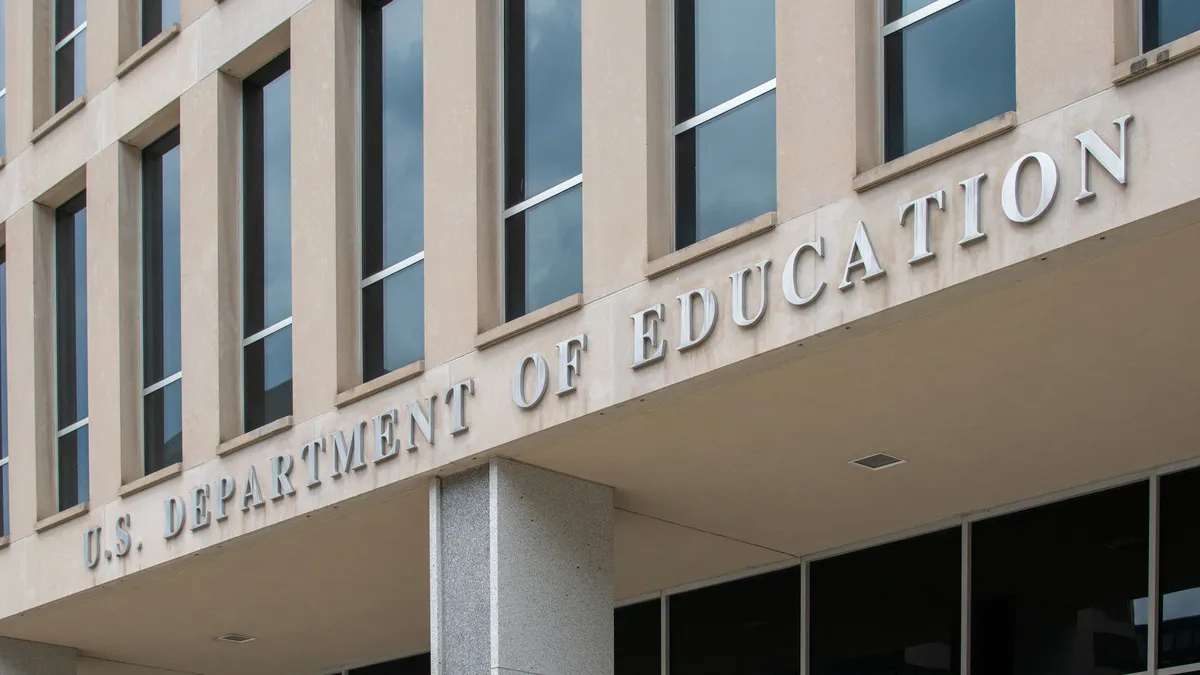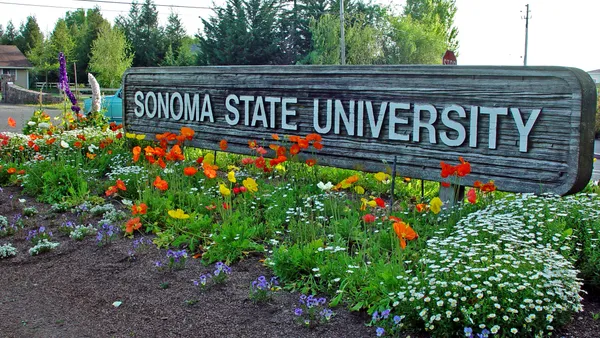Dive Brief:
- Sonoma State University is undertaking a turnaround plan meant to firm up the public institution’s financial sustainability amid a larger-than-expected budget deficit.
- The plan, unveiled Monday, calls for boosting enrollment, bringing down costs and creating new programs and career pathways for students, among other measures.
- Sonoma State’s announced initiatives come as the California State University system and the University of California system contend with state cuts and federal funding chaos that have hit budgets, forcing hiring freezes and potential cuts down the road.
Dive Insight:
In January, Sonoma State announced a slew of forthcoming cuts at the university, including the elimination of 12 staff positions and four management roles, along with the decision not to renew 46 faculty contracts.
On top of that, the institution said it would wind down about two dozen academic programs and cut its entire NCAA Division II athletic department. Many of those moves have led to public outcry by students, faculty and other stakeholders. They were precipitated by a $24 million deficit for the 2025-26 year, driven largely by enrollment declines and cost increases over recent years.
In the nine page turnaround plan outline released this week, the university said, “Our recent budget decisions now need to become investment decisions.”
It added, “Those investments are going to help recruit students, retain them, prepare them for careers, connect them to on-campus and regional employment and business opportunities, and keep them in the North Bay to reduce the region’s ‘brain drain’ and create a ‘brain gain.’”
The tension between Sonoma State’s cuts and investments reflect a balancing act many colleges are attempting to execute, as falling enrollments create budget pressures. But institutions, especially tuition-dependent ones, still need to attract and retain new students to survive and thrive.
Sonoma State's turnaround plan aims to raise enrollment by 20% in five to seven years, to the equivalent of 6,800 full-time students.
It aims to do that by improving its marketing, bringing artificial intelligence and predictive analytics to its recruitment process, and expanding direct admissions and dual-credit programs with local high schools as well as concurrent enrollment with community colleges.
At the same time, officials acknowledged “a reality” in demographic declines affecting the Bay Area that will likely mean fewer traditional-aged college students. California is expected to see one of the biggest declines in the country, with high school graduates projected to fall 29% between 2023 and 2041, according to the latest estimates from Western Interstate Commission for Higher Education.
In that competitive recruiting environment, Sonoma State also hopes to attract students by adding at least four new “high-demand” academic offerings in three years, while also trying to drum up demand in existing majors and degrees. The university said it will focus on ramping up approval for and hiring in program areas such as health sciences, data science and robotics.
Across 60% of its majors, Sonoma State wants to build out what it calls “structured” career pathways and internships by partnering with local employers. It aims to have at least 500 students participating in each major in five years.
Along with all the added activity, the university aims to cut its cost of attendance. It pointed out that Sonoma State’s per-student costs are 33% higher than the California State average — a metric it aims to reverse. Over time, the university plans to bring those costs down in part by partnering with its California State system peers in the region to reduce administrative overhead.















